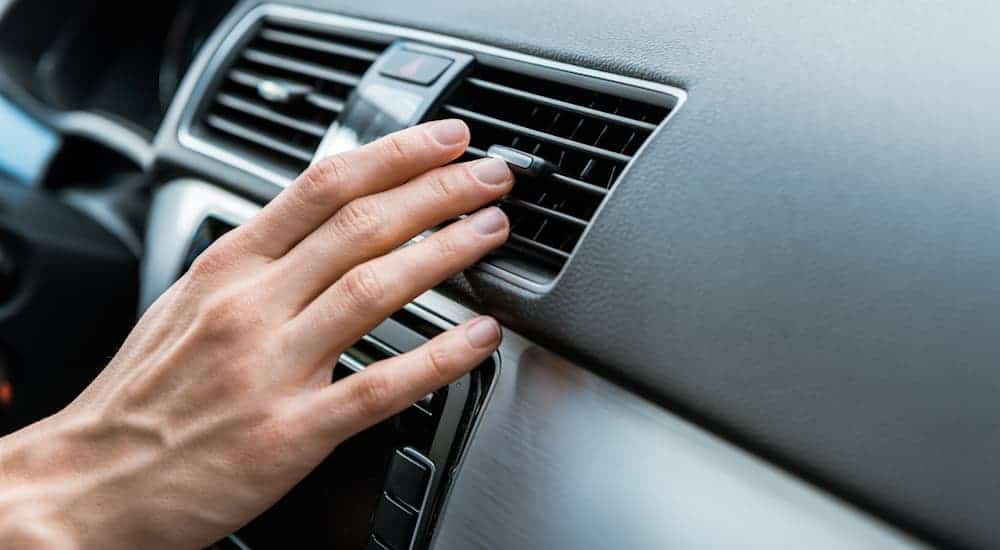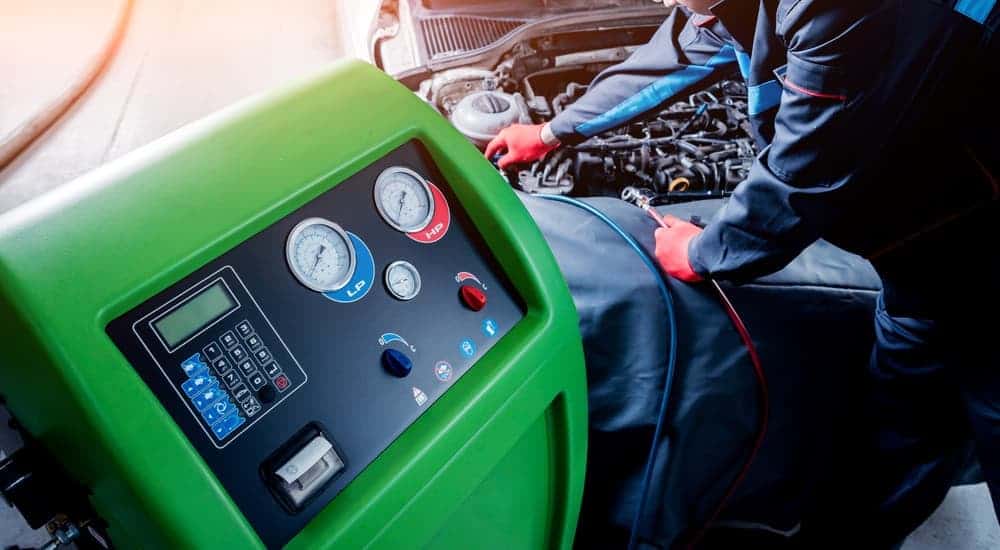When it comes to owning a vehicle, one of the more important factors is the comfort of the vehicle. While overall, it does not actually impact the ability of the vehicle to drive, driving comfort is still a major factor that people consider when purchasing or repairing a vehicle, one of the more important comfort features is the AC. There are many benefits that come from having a fully working AC system in a vehicle, as there are many situations where rolling down the windows just will not be effective, such as during high-speed travel and traffic jams. Due to the nature of automotive AC units, there are a few different issues that can arise from them that will require a particular form of servicing/repair. There are quite a few different options when it comes to auto air conditioning repairs, but more often than not the best option available to the average car owner will be to take their vehicle down to their local dealership, where they can handle any and all automotive AC repairs.
Just about every single car owner has to at some point over the course of a year drive in uncomfortably warm climates. For people living in the South, this is a much more common occurrence; however, even in Northern or mountainous regions, can the temperature spike to unseasonably high levels. Due to the construction and materials of vehicles, they are very good at taking in and trapping heat and can reach dangerously high temperatures when the windows are up during a hot day. It is this reason that just about every single vehicle nowadays comes with some sort of automotive air-conditioning system. As of 2010, 99 percent of all new cars come equipped with an AC system standard.
How Does Automotive Air Conditioning Work?
While auto AC units are quite a wonderful and useful invention, they are also rather complex and have been refined and made more efficient over the course of their existence. The first form of automotive air conditioning was created by Packard in 1939 and was subsequently made standard on all of their new vehicles starting in 1940. While it did not have a thermostat and was quite cumbersome (it took up nearly half of all available trunk space), the idea quickly caught on. By 1969, more than half of all new cars came with an AC system built-in. It has performed the same basic functions of cooling and removing humidity from the air since its creation; however, it has undergone many different changes over the years, from becoming smaller and more compact to the type of coolant used.
There are three main components that make up an AC system; a compressor, a condenser, and an evaporator. These components work together along with a few smaller components to keep the air cool and flowing. The compressor is a pump which is driven by a belt that attaches to the engine’s crankshaft. It draws in refrigerant, which is in a gaseous form, and compresses it under heavy pressure, and forces it into the condenser. The condenser is essentially just a radiator and operates very similarly to the one that comes in a vehicle by radiating heat out of the system.
When the gaseous refrigerant is moved to the condenser from the compressor, it creates a large amount of heat, which is dissipated as air flows around the twisting tubes. This causes the refrigerant to condense back into a liquid form, sort of like steam condensing into water. This liquid refrigerant is moved along through a few smaller components such as the receiver and the thermal expansion valve, where any additional water that may have made it through is removed.
The refrigerant than finally reaches the evaporator, where it is a cool condensed liquid at 32°F. The evaporator is located in the cabin of the vehicle, usually above the footwall of the passenger side. The heat from the vehicle’s cabin is enough to make the refrigerant boil, which causes it to revert back into a gaseous state, where it is able to absorb a large amount of heat. The gaseous refrigerant then flows out of the evaporator, and out of the passenger cabin, and takes all heat along with it. A fan blowing along the outside of the evaporator coils blows cold air into the cabin, and the refrigerant flows back into the compressor to begin the process again.
Different Forms of Automotive AC Issues and What to Look Out For
Automotive AC units work hard to ensure that they can help deliver a pleasant driving experience, however, there are a number of different issues that can come from an AC unit which can impact how well it operates, or even stop it from functioning altogether. One of the major issues that can and probably will occur at some point is the AC blowing out air that is not as cool as it should be, or even warm air. While this can be very frustrating, it typically just indicates that the AC system is either low on or out of refrigerant, and needs to be recharged by a mechanic/AC technician. This is usually a simple and inexpensive process, as just about every single automotive AC unit will experience some sort of refrigerant lose over time.
However, if a recharge does not help the situation, it may indicate a major refrigerant leak, which can be identified with a special UV dye that is added to the AC system. Sometimes, AC systems can experience intermittent cooling, where it will blow cold air for a while then warm up. This can indicate that the AC system is freezing up, which is usually due to there being too much air and moisture in the system. This will require the system to be evacuated with a vacuum pump.
If you ever notice an automotive AC system that begins to make noise when it is operating, you should quickly check to determine if there is anything like a loose hose or wire rattling against the system at any point in the engine bay. If there is not anything rattling against the system and the noise persists, this could indicate that the compressor is on its way out, and will need to be replaced soon.
Why Kings Ford is the Best Place to go to Service a Ford’s AC System
When it comes to automotive AC issues, they can be a tricky to deal with, as there are a number of issues that have similar symptoms, and certain repairs require specialized equipment that some smaller garages may not supply. For most repairs, one of the most reliable places to take your vehicle is to your local dealership, where their mechanics specialize in your particular brand of vehicle.
While just about all automotive air conditioning are designed similarly, they sometimes require specialized parts and accessories to be serviced properly. By taking it to a dealership, you ensure that not only will the mechanic working on your vehicle be familiar with your particular vehicle, but they will also have all of the tools and parts necessary. For Ford owners in the Cincinnati area, there is no better place to bring your Ford than Kings Ford, where their service department will have all the tools and knowledge necessary to keep your automotive AC system fully functional and cold.


